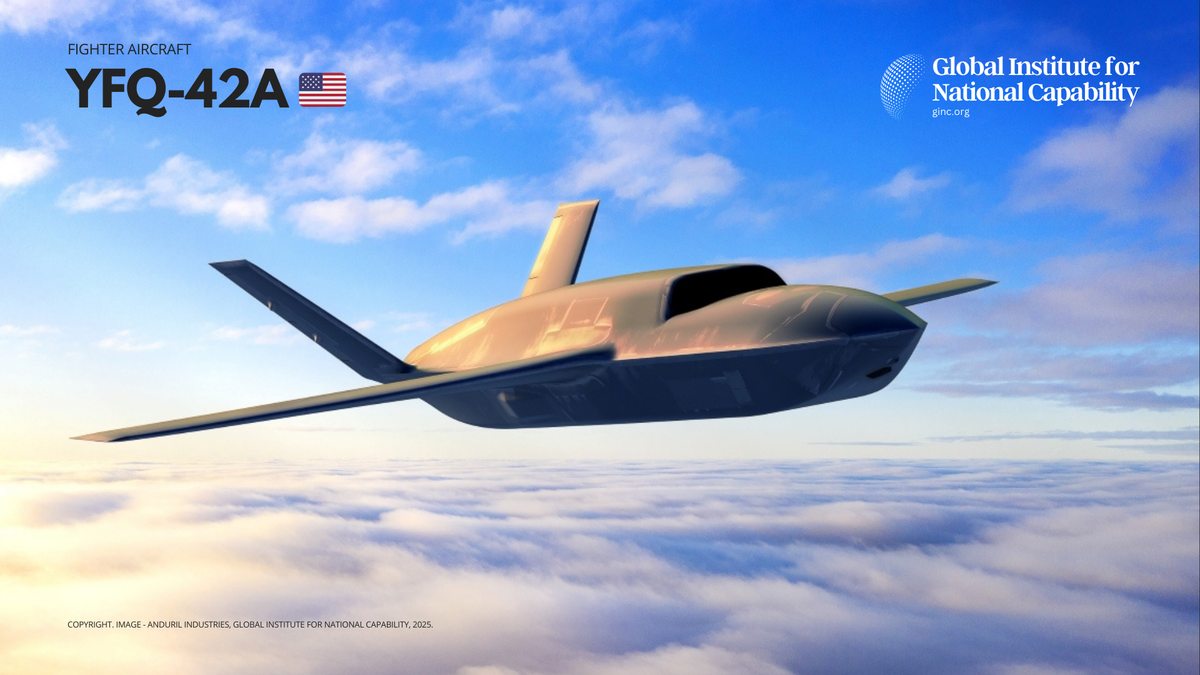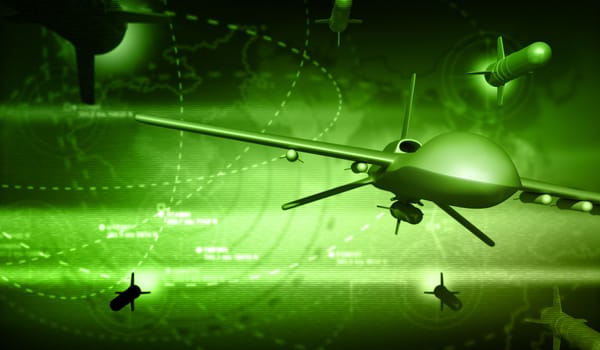YFQ-42A 🇺🇸

The YFQ-42A is a next-generation autonomous combat aircraft prototype developed by General Atomics Aeronautical Systems under the U.S. Air Force’s Collaborative Combat Aircraft (CCA) program. It is one of two platforms—alongside Anduril’s YFQ-44A—officially designated with a fighter drone classification, signaling a foundational shift in how the U.S. military conceptualizes air dominance in the 21st century.
Development Context
The CCA initiative is part of the broader Next Generation Air Dominance (NGAD) program, which aims to integrate manned and unmanned systems into a cohesive air combat architecture. The YFQ-42A is designed to function as a “loyal wingman,” flying alongside crewed platforms like the F-22 Raptor and F-35 Lightning II, extending sensor range, conducting strike missions, and absorbing risk in contested environments.
General Atomics has long been a leader in unmanned systems—best known for the MQ-1 Predator and MQ-9 Reaper—but the YFQ-42A marks a departure from surveillance-centric drones to a platform optimized for high-speed, high-agility combat.
Design and Technical Features
While most specifications remain classified, the following details have been made public or inferred through open sources:
- Platform Lineage: Based on General Atomics’ XQ-67A prototype, part of its “Gambit” family of unmanned aircraft.
- Length: ~6.1 meters
- Wingspan: ~5.2 meters
- MTOW (Max Takeoff Weight): ~2,268 kilograms (5,000 lbs)
- Propulsion: Single turbofan engine, likely commercial off-the-shelf for cost savings
- Speed: ~Mach 0.95
- Service Ceiling: ~50,000 feet
- Armament: Internal weapons bay likely configured for 2 × AIM-120 AMRAAM air-to-air missiles
- Design Characteristics: Stealth-optimized fuselage, dorsal intake, V-tail configuration, and an emphasis on modularity and low-cost expendability
The aircraft is intended to be semi-autonomous, capable of executing commands via secure data links while leveraging onboard AI for navigation, targeting, and threat response in degraded environments.
Mission Roles
The YFQ-42A is intended for multi-role missions, particularly in high-threat environments where crewed aircraft face limitations. Key operational roles include:
- Air-to-Air Combat: Acting as a forward-deployed missile platform or decoy
- Electronic Warfare: Potential to carry jamming pods or sensor disruption payloads
- ISR (Intelligence, Surveillance, Reconnaissance): Contributing to sensor fusion with real-time battlefield data
- Strike Coordination: Working as a node in a distributed kill chain with manned aircraft
🔍 Strategic Importance
The YFQ-42A represents a major shift toward affordable mass and survivability in future conflicts. The USAF has publicly stated its intention to deploy CCA aircraft in large numbers, with a cost target around $25–30 million per unit—substantially cheaper than a crewed fighter.
This makes the YFQ-42A not only a combat multiplier but also a force that changes how force projection is structured: emphasizing quantity, autonomy, and interoperability over traditional manned fighter dominance.
Program Status and Future Outlook
- Designation Date: March 2025
- Development Phase: Ground testing complete; flight testing anticipated later in 2025
- Nicknames: No official or colloquial nickname currently announced
- Program Partners: U.S. Air Force, General Atomics Aeronautical Systems
The YFQ-42A is likely to play a critical role in early operational experimentation and doctrine development for manned-unmanned teaming over the next decade. Its success could influence future procurement decisions not only in the U.S. but also among allied air forces seeking autonomous capabilities.




